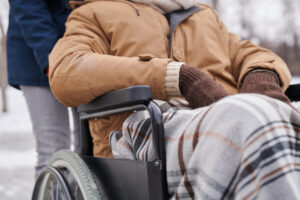
If you have recently undergone a post-injury operation, you are very likely to need a walking aid to help you get around. Time is your friend when recovering from an invasive surgery. Recovery is a journey, and getting a folding walker or a knee scooter can help you take the early steps. Safety is paramount, so start slowly and take some time to practice.
Discuss your choice of mobility aid with your doctor before investing. Taking stairs and navigating uneven pavement will pose challenges at first. Talk to your physical therapy specialist about how much weight you should put on the recovering leg.
Remember to take things slowly. Additional trauma can delay your recovery for months. Get help and training from your therapist. You may find it difficult to begin walking again, but it is both important and necessary to properly restore your gait.
If you are unsure about which walking aid to choose or how to begin, consult with your therapist or physician for guidance.
Adjusting your walking aid – be it a rollator walker or a quad cane – according to your height is crucial for proper posture and correct use.
Avoid overloading the recovering leg. Putting too much pressure on it may worsen your condition, slowing recovery or even causing additional trauma.
If you find it difficult to avoid putting weight on your injured limb, consult your therapist. They may be able to recommend another device that will better suit your needs.
What is the best way to use your walking aid along with your stronger limb to walk up stairs?
Here are some basic guidelines:
Now that you are ready to begin walking again, visit the CertHealth store to choose the walking aid that is right for you.








